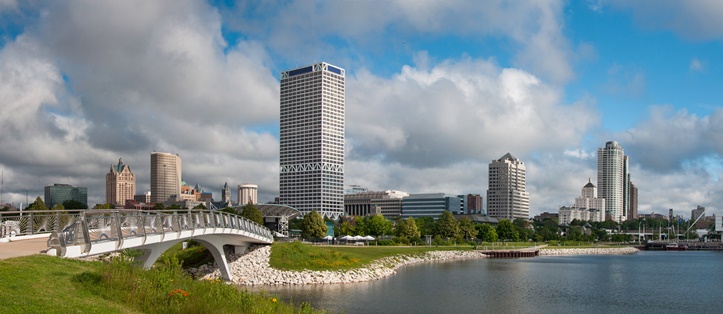Thee drive into Milwaukee, Wisconsin once offered a sweeping vista of the American industrial apocalypse.
Abandoned factories and decaying smokestacks cast shadows over rusting rail yards, weed-choked lots, heaps of junked automobiles and small mountains of sand, coal and salt. The odor from the slaughterhouses, a massive coal-fired power plant and, especially, a yeast factory wafted up to the traffic, while waste from a century and a half of tanning leather, pouring steel and butchering beasts seeped into the river below.
Once the beating heart of this great industrial city, the Menomonee River Valley had become, in the words of a mid-1980s Milwaukee Journal reporter, “an ugly, rust-colored lesion on the city’s midsection.”
Fast-forward two decades and Wisconsin’s most visible eyesore is barely recognizable. Down in the valley floor—four miles long and a half-mile wide—cyclists spin down the Hank Aaron State Trail, while elementary school classes watch great blue herons pick their way through the marshes.
Salmon and steelhead trout run up the river in fall and spring respectively. Kids play on soccer fields, while adults play games of chance in the Potawatomi tribe’s $450 million casino, its 21-story tall glass and steel hotel tower looking down on rebuilt streets, viaducts and landscaping and the $75 million Harley-Davidson Museum, now one of the city’s biggest tourist attractions.
Most impressive, though, is the industry: acre upon acre of walkable, sustainably-designed new manufacturing complexes. Here’s how it happened:
Photo of Milwaukee via Adobe Stock Photos.

